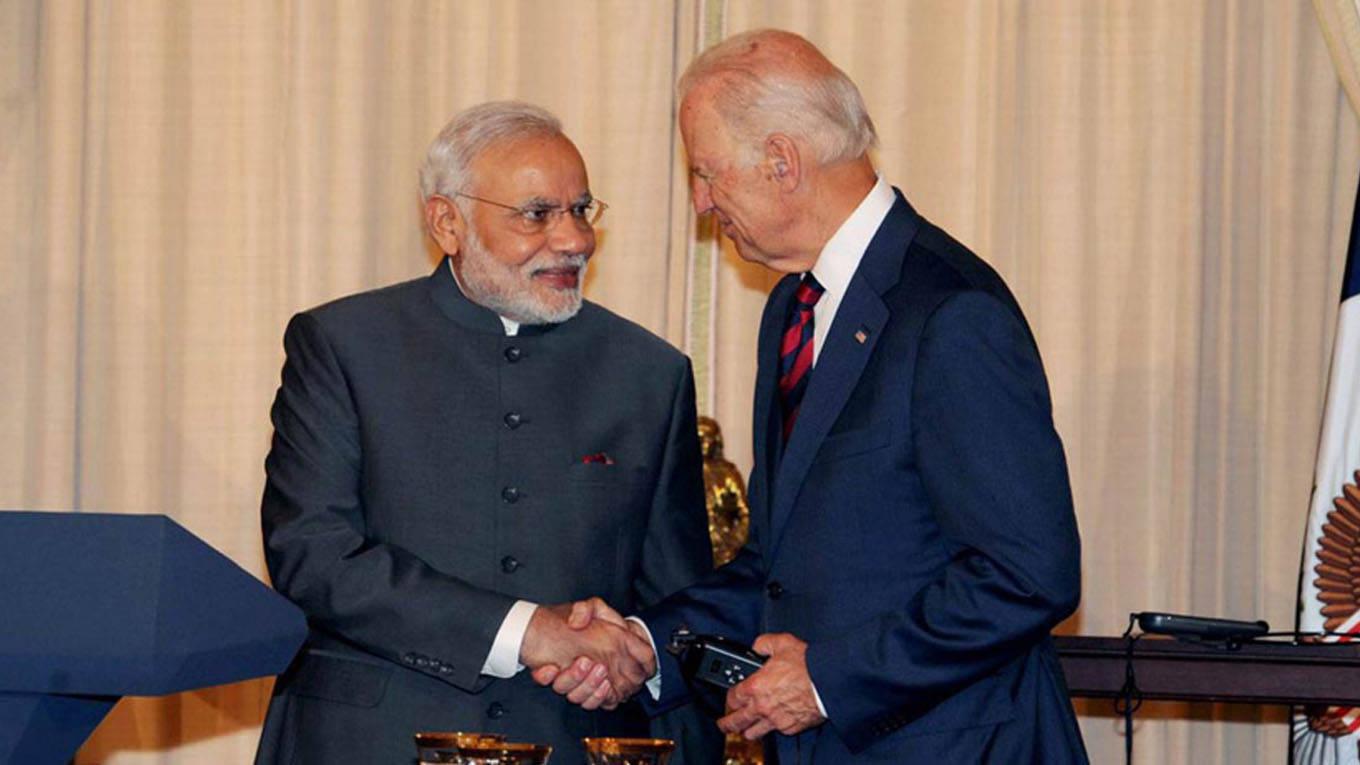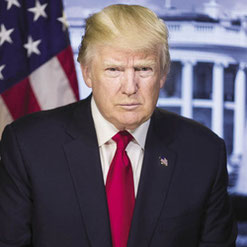-
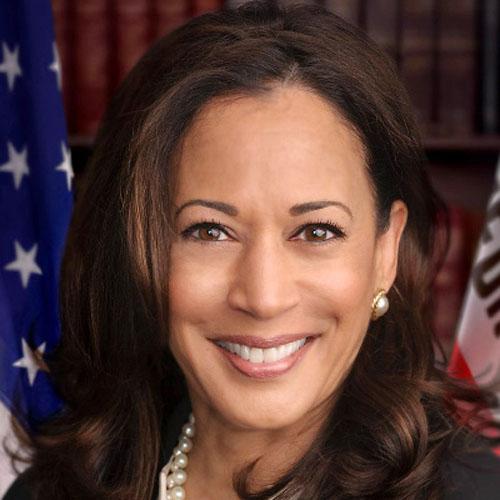
The rise of Kamala Harris, daughter of an Indian mother
Though Shringla, a former Indian ambassador to the US, did not state it, the India-US relationship is not just a government-to-government or personality-driven construct. The relationship is powered by a unique people-centric interface that has few parallels in the world. The soft power appeal of the US to India and that of India to the US, has always stood the test of time. After all, one is the oldest democracy in the world, the other, the largest. While Americans have been attracted by components of India’s soft power as diverse as Bollywood, classical music, food, yoga, ayurveda, political pluralism, religious diversity and openness to global influences, Indians see the US as a beacon of modernity, liberalism, mobility, individualism, pluralism, voluntarism, and freedom.
Land of opportunity
Coming down to specifics, American politicians across the aisle have largely seen India as a diverse though noisy democracy, the strategic community views it as a counterweight against China that needs to be cultivated and business is attracted by the lure of our markets that need to open up further. Indians, on the other hand, have always viewed the US as a land of opportunity. That is why many hard-working Indians became major beneficiaries of the H1-B visa scheme which the US issues to qualified professionals to work and stay in that country. The number of such non-immigrant visas hit a peak in 2017 at 900,704 (but has since been declining). The current generation of Indian Americans can be found in practically every vocation. They even include political activists, comedians and Hollywood and TV artists though, historically, Indians in the US worked in medicine, science & technology, engineering and mathematics-related jobs. Some, like the Patel community from Gujarat, took to the hotel industry and grew to dominate it. Others were entrepreneurs in Silicon Valley after the digital revolution of the 1980s.
The rise of Kamala Harris, daughter of an Indian mother, as the Democratic Party’s candidate for Vice-President is being seen as a coming-of-age of the Indian American community in the US. But there are equally worthy stories. Of late, more Indian Americans hold public office than ever before. Bobby Jindal, Nikki Haley, Nisha Biswal and Richard Verma – these are some of the names that come to mind.
Indian Americans have also adeptly climbed the corporate ladder. In 1997, Ramani Ayer became the CEO of the Fortune 500 financial firm The Hartford – becoming the first in the list of Indian leaders heading American businesses. Today, a number of Fortune 500 companies of American origin – including Microsoft, Alphabet, Adobe, IBM, and MasterCard – are led by Indian American CEOs.
-
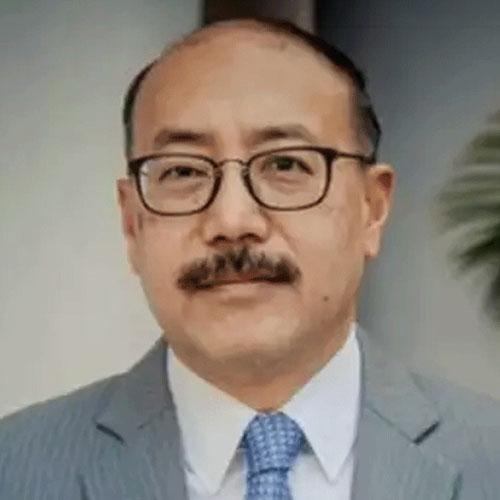
Our relations with the US will continue to be strong and robust
In 2014, the Obama administration sent out a powerful signal in recognising the community’s role by appointing Richard Verma, a lawyer who served as assistant secretary of state in the US Department of State, as ambassador to India. The recent appointment of Vivek Murthy, the former US surgeon general, as co-chair in President-elect Biden’s Covid-19 taskforce is another shining example of the Indian American Dream. In all, Biden has named 20 Indian Americans in his transition team that will evaluate the operations of key federal agencies in the current dispensation.
The strength of the Indian diaspora community in the US is almost 4 million. Though Indian Americans make up just 1 per cent of the total US population, it’s a political constituency for India that has grown organically – one that no US presidency can ignore. During the recent election, the community found itself being wooed by both the Trump and Biden Campaigns. The Indian American Attitudes Survey, a collaboration between the Carnegie Endowment for International Peace, Johns Hopkins-SAIS and the University of Pennsylvania, had pertinently noted that as many as 72 per cent of the registered Indian-American voters plan to vote for Democratic presidential candidate Joe Biden.
Taranjit Singh Sandhu, India’s ambassador to the US, who has been reaching out to the incoming dispensation by engaging with top Congressmen from the Democratic Party, is also in touch with two prominent Indian Americans, Vivek Murthy and Raj Chetty, the Harvard economist, who briefs Biden on economic issues. Both are expected to play important roles in the coming months. “The Indian American community is an important stakeholder in our relationship,” says Sandhu.
This is the right approach. During the Clinton years, New Delhi had created a special post of ambassador-at-large to look after NRI affairs and be a bridge to the US administration. However, the person chosen by Prime Minister Atal Bihari Vajapyee for the job, Bhishma Narain Agnihotri, a non-diplomat, got embroiled in multiple controversies, which defeated the purpose of his appointment.
Market lure
Adding ballast to the relationship is the lure of the Indian market for American businessmen. The US has emerged the largest single source of FDI in India. The total stock of US FDI in India till 2019 was $45 billion. In July this year, tech giant Google announced plans to invest $10 billion in India over the next 5-7 years by way of equity investments, partnerships and other arrangements to ‘accelerate digitisation’ in the country. Google’s investment plan is in line with the big-tech’s bullish outlook on India. Earlier this year, Amazon said it would invest an additional $1 billion in India. This was followed by a marquee investment announcement of $5.7 billion by Facebook in the country’s largest telecom company Reliance Jio. In June, Microsoft’s venture fund M12 said it would open an office in India to pursue investment opportunities focusing on B2B software start-ups. Apple supplier Foxconn, though registered in Taipei, announced plans of investing $1 billion to upscale its factory near Chennai. In July alone, FDI by the technology firms amounted to $17 billion.
Ifs and buts
Yet there are still some ifs and buts to this facet of our relationship. Take the case of the Trump administration’s plan to have alternative supply chains to China to counter the risks revealed by the Covid-19 pandemic. The Modi government was agog with excitement at the prospect of India emerging as a likely recipient of investments to set up parallel supply chains. Asked whether the US plan could materialise post the Trump administration, Nisha Biswal, former US assistant secretary of state, who now heads the US India Business Council, feels that diversification and building some redundancy in supply chains is still a focus for many companies. But, “for India to attract supply chains, it needs to compete with other countries such as Vietnam and Malaysia. India is attractive in terms of its market, and its young, educated, skilled workers. But it also needs to offer competitive investment incentives and improve policy and regulatory stability.”
-
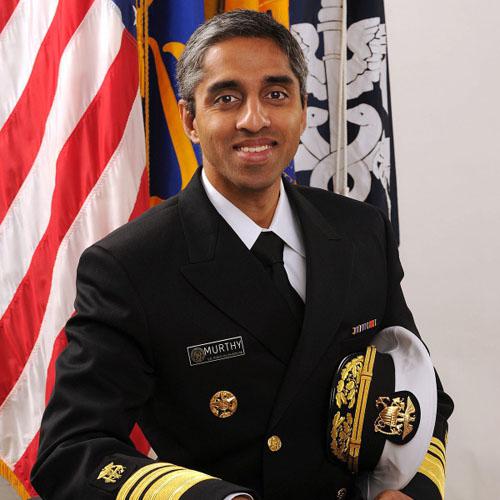
Murthy: Shining example of the Indian American Dream
Herein lies the catch. Trade experts point out that America’s technological prowess is founded on the values of free speech, protection of intellectual property (IP) and market competition. A Biden administration is likely to re-emphasise these in bilateral and multilateral engagements, in keeping with a reversion to the country’s historic mean. For India, it is important to consider how each of the aforementioned values can impact future conversations on technology and trade, and, concomitantly, secure access to American markets.
Functionaries of the Modi administration often harp on the need for collaboration in innovation so that India becomes a high-tech economy. It is said that both US and India have innovation and entrepreneurship imbedded in their societies. Some of the great technology breakthroughs in Silicon Valley have been driven by Indians and Indian-Americans and India has an impressive start-up culture that is driving new technology development. There is enormous potential for the two countries to collaborate and technology investment is one of the leading drivers of FDI into India. How can the new US government or for that matter American companies help in scaling up this collaboration? Biswal points out that for that to happen, India will need to strengthen IP, harmonise policies on data and digital trade and streamline cross-border collaboration.
So, while personal vibes (like that of Modi and Trump) can help, it will need more substance to get big-ticket investments to come in. “While a healthy connection between political leaders is certainly helpful, for making long-term investment decisions American companies rely on the attractiveness and potential of a market,” adds Mukesh Aghi, CEO & president, US-India Strategic Partnership Forum (USISPF), an India advocacy group.
Defence, security ties
Of late, a major constant in the India-US relationship has been the growing defence and security cooperation, not to forget the $20 billion that has flowed into American arms corporations from India over the last two decades. A week before Biden beat Trump to the post, even as American voters were still thinking about whom to elect, India and the US had held ‘2+2’ discussions on defence and strategic issues. The ‘2+2’ Ministerial Dialogue, attended by Secretary of State Mike Pompeo and Secretary of Defence Mark Esper from the US and External Affairs Minister S. Jaishankar and Defence Minister Rajnath Singh from India, sealed the Basic Exchange and Co-operation Agreement (BECA) for geo-spatial information sharing. By inviting senior Trump officials for ‘2+2’ talks just before the US elections, some thought that the move had played into the impression of New Delhi expecting a Trump win.
-
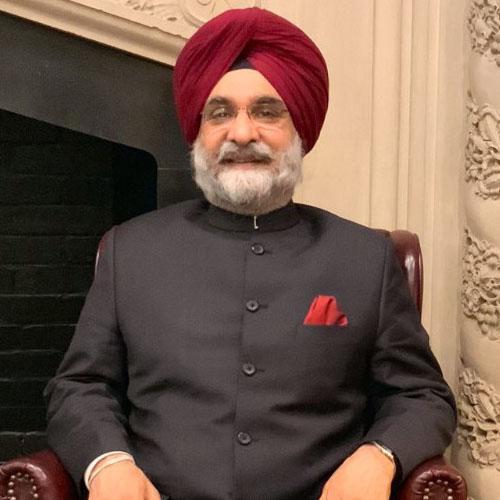
Sandhu: The Indian American community plays a vital role
The impression, however, in no way undermined the importance of the pact. Apart from real-time intelligence and information, BECA enables supply of high-end equipment as well, which will allow India to piggyback on American geo-spatial information to hit enemy targets with pinpoint accuracy. It is the last of three foundational agreements between the two countries for deeper military cooperation.
But here’s the thing. GSOMIA (a military information agreement) was the first of the foundational agreements to be signed in 2002 during the term of Atal Bihari Vajapyee. It essentially guaranteed that the two countries would protect any classified information or technology that they shared. It was aimed at promoting interoperability and laid the foundation for future US arms sales to the country. After the Modi-led BJP government came to power, the first of the three agreements, the Logistics Exchange Memorandum of Agreement (LEMOA) was signed in 2016. It was almost at the end of the Obama administration that the two sides inked this agreement, which allows the militaries of the US and India to replenish from each other’s bases, and access supplies, spare parts and services from each other’s land facilities, air bases and ports. This was followed by the Communications Compatibility and Security Agreement (COMCASA), which was signed in 2018 when Obama had demitted office and Trump was calling the shots. The agreement enables Indian aircraft and ships with the US-made equipment to communicate with each other and with the US seamlessly.
It is also pertinent to recall that it was the Obama-Biden administration, recognising India’s growing role on the world stage, which formally declared US support for India’s membership in a reformed and expanded United Nations Security Council. The Obama-Biden Administration also named India a Major Defence Partner – a status approved by the Congress – to ensure that when it comes to the advanced and sensitive technology that India needs to strengthen its military, India is treated on par with closest partners of the US.
Engage and resolve
Given the host of security and defence ties shared by India and the US, one would think that not much can change in the New Delhi-Washington equation. But a Biden administration could mean a much closer look at India’s spotty recent human rights and religious freedom record – both of which were largely ignored by the Trump administration. Indeed, the Democrats, unlike the Republicans, have been vocal on issues like Kashmir, Citizenship Amendment Act, Delhi riots, action against journalists and NGOs and alleged human rights violations.
There have been friction points as well. So, when foreign minister Jaishankar – somewhat uncharacteristically – snubbed the Democrat-led House Foreign Affairs Committee by cancelling a meeting after a human rights hearing held on Jammu & Kashmir in December 2019 passed a resolution critical of India, there were questions on why he had chosen to not engage with the committee. Incidentally, the resolution was moved by Democratic Congresswoman Pramilla Jayapal, who was born in Chennai. Recently, a year after the Modi government altered the status of J&K by abrogating Article 370, the chairman of this important committee, Democrat Eliot Engel of the US Congress, again noted ‘with concern’ that conditions in the region have not returned to normality.
-
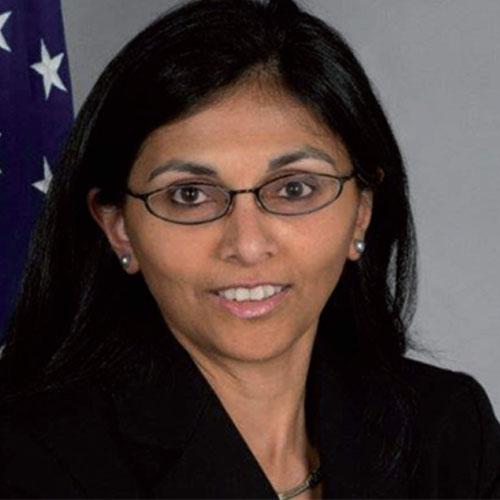
Biswal: India needs to compete with others
It is expected that the Biden administration will press a hard nerve on the issues of human rights, Kashmir, and the CAA. New Delhi should be prepared to either argue convincingly on these sensitive issues – or be more accommodative. Michael Kugelman, deputy director of the Asia Programme at the Washington-based Wilson Centre, feels that the Biden administration is expected to be critical of majoritarian policies, which critics say target India’s minorities. However, a Biden White House won’t ‘risk antagonising a country that is widely viewed in Washington as America’s best strategic bet’. Many in India too, including well-meaning and concerned members of the civil society and the Opposition parties, are critical of policy decisions on these and several other issues. The Opposition may not be able to have a say in India’s internal policy matters but perhaps a US president can have that leverage to move Indian government!
Biden’s presidency promises a change in leadership style, with broader powers to advisers and process-driven decisions. His belief in building up US traditional trans-Atlantic and trans-Pacific alliances will come as a relief from America’s current transactional trends. As New Delhi prepares to adjust its responses to the new dispensation, it would welcome Biden’s stated intention to re-energise the multilateral global order, and to restore the US’s position in ‘leading not by the example of (its) power, but by the power of example’. There will be no sudden moves such as Trump’s withdrawal of India’s generalised system of preferences (GSP) export status in trade.
The language will be civil: India will no longer be called a ‘tariff king’ or a ‘filthy’ country (in terms of pollution). Policy consistency is likely to be preferred to a more personalised summit style. And no back-slapping either! In short, Biden will be more Presidential.
Much is expected of Biden on the H-1B visa regime, tightened by Trump in recent years. Indians are among the major beneficiaries of the H-1B visa scheme of the US. Biden has said that he will turn the clock back and eliminate the anti-immigration proclamations and executive orders issued by Trump. However, even as these promises paint a rosy picture, his support of a wage-based allocation process for H-1Bs, may become a problem. “The wage-based visa allocation process is a disadvantage for foreign students, who enter the workforce at entry-level wages,” says Phil Curtis, co-managing partner at Chin & Curtis LLP, immigration experts.
The US remains the top trading partner for India in terms of both trade in goods and trade in services. Bilateral trade touched almost $150 billion in 2019. While the bilateral trade between US and India is about 62 per cent in goods and 38 per cent in services, the bilateral trade between India and China is dominated by goods. For comparison purposes, if we look at the goods trade only, India’s trade with China dropped 6 per cent in 2019 to $85 billion, while India’s goods trade with the US increased 5 per cent to $92 billion, suggesting India’s deeper trade engagement with the US than China. China had a huge trade surplus of more than $57 billion with India, indicating China’s strength in the Indian market, especially in sectors, such as Electronics, Machinery, Organic Chemicals, Plastics and Medical Devices. The US goods exports to India, in comparison, were mainly concentrated in Mineral Fuels, Precious Stones, and Aircraft. The US faces tough competition with China in the Indian market in areas, such as Electronics, Machinery, Organic Chemicals and Medical Devices. This has been a sore point with the US.
-
A return to Iran nuclear negotiations would help India resolve questions about its involvement in the Chabahar port project and its related infrastructure
Trump was determined to make it inward for the US, creating difficulties for Indian exporters to access the American market. Biden has spoken of bringing the US back into the WTO. He has even favoured deeper trade ties with India. But that won’t happen overnight. Given the state of the American economy and the fact that the core base of Democratic Party is even more protectionist than the Republicans, Biden may not be able to make the concessions that India wants. Trade experts recall that it was during Obama’s tenure, with Biden as the vice-president, that the US started blocking key items on the table and raising what were settled issues.
The big question for exporters is whether Biden will restore the Generalised System for Preferences (GSP) that Trump withdrew. While the Modi government has sought to play down the impact of preferential tariffs on India’s exports to the US, it is keen that the benefit be restored along with market access for some of India’s farm products. In return, it had even eased the price caps for high-end stents and implants, while offering to reduce duties for several products, including the high-profile Harley Davidson bikes. “What will change is the tone, it will be more diplomatic instead of calling India a tariff king,” said Biswajit Dhar, professor of economics at the Jawaharlal Nehru University.
Trade experts also warn that with the Trans-Pacific Partnership (TPP) agreement likely to get back on the priority list, something that Trump had abandoned, New Delhi may come under pressure to join the trade grouping. TPP seeks to put in place an ambitious regime for IPR, digital economy and state-owned enterprises, among a host of areas. In the past, New Delhi had shunned TPP, while pursuing the Regional Comprehensive Economic Partnership until it walked out last year. Participating in TPP will mean an overhaul of the stand on multiple issues and reforms that may politically hurt.
Old foreign policy hand
What India can take comfort in is that Biden, a supporter of India-US relationship, brings to his presidency both the depth of his understanding of foreign policy and the promise of future strategic ties. A policy paper released by the Biden Campaign during the closely-fought election gave an inkling of how he wants to accomplish it. Topping the list is pushing India to become a permanent member of the UN Security Council, continued co-operation on terrorism, strengthening ties on issues like climate change and health working towards a multi-fold increase in bilateral trade. As both chairman of Senate Foreign Relations Committee and Vice-President in the Obama administration, he played a role in systematically deepening strategic engagement, people-to-people ties, and collaboration with India on global challenges, the policy paper said.
-
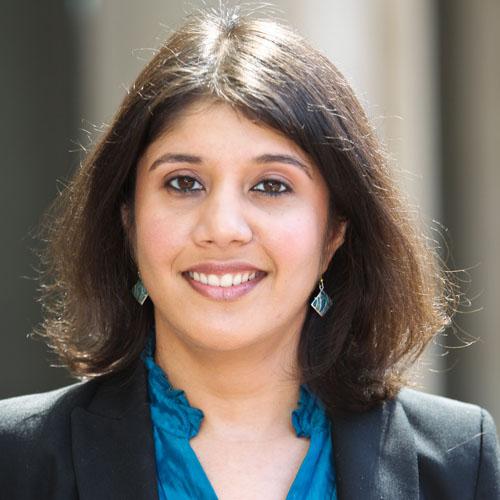
Tanvi: There won’t be any public lecture
In 2006, Biden announced his vision for the future of US-India relations: ‘My dream is that, in 2020, the two closest nations in the world will be India and the US.’ He has also worked to make that vision a reality, including leading the charge in Congress, working with Democrats and Republicans, to approve the US-India Civil Nuclear Agreement in 2008, it said.
According to the policy paper, he will deliver on his long-standing belief that India and the US are natural partners, and a Biden administration will place a high priority on continuing to strengthen the US-India relationship. “No common global challenge can be solved without India and the US working as responsible partners. Together, we will continue strengthening India’s defence and capabilities as a counter-terrorism partner, improving health systems and pandemic response, and deepening cooperation in areas such as higher education, space exploration, and humanitarian relief,” it said.
For India, these could include the return of the US to Paris climate accord, which would help with its energy transformation and build a green economy. The Obama-Biden administration had worked closely with India to secure the successful signing of the Paris Climate Agreement to address the global climate crisis that threatens all our people. India stands to gain a lot in terms of supporting these efforts. Clean energy will help to tackle the problem of pollution that besets our cities. Our solar energy industry will get a leg up. An initiative like the International Solar Alliance, launched by Modi and Francois Hollande, former President of France, in 2015 will take off again. The overarching objective of ISA is to collectively address key common challenges to the scaling up of solar energy in ISA member-countries.
It could mean a return to Iran nuclear negotiations, which will facilitate India’s regional connectivity ambitions. This would help India resolve questions about its involvement in the Chabahar port project and its related infrastructure. He is unlikely to reverse the Afghan pullout and instead might make it a more measured exit. This will give India some more breathing space in the region.
On China, he is likely to adopt a less confrontational attitude while maintaining a pushback. A Biden administration will also work with India to support a rule-based and stable Indo-Pacific region in which no country, including China, a shared rival, is able to threaten its neighbours with impunity. It was only towards the end of his tenure that Trump grew serious about a multilateral approach to counter Chinese assertion in Asia-Pacific region. The Quadrilateral Approach or the Quad that has been rejuvenated is likely to take a more structured shape under Biden. Additionally, Biden has been openly critical of China’s Xinjiang policy of suppression of Uighyr Muslims. This augurs well for India, particularly when China is trying to dictate terms along the Line of Actual Control in eastern Ladakh, where military standoff is going on for six months.
Bipartisan support
But foreign policy itself may not be Biden’s immediate priority, given the US’s battle with the corona virus pandemic, and the President-elect’s goal to ‘heal’ rifts in its polity and ‘restore the soul of America’. However, it is clear that he will make moves to reverse some of the Trump-era policies.
-
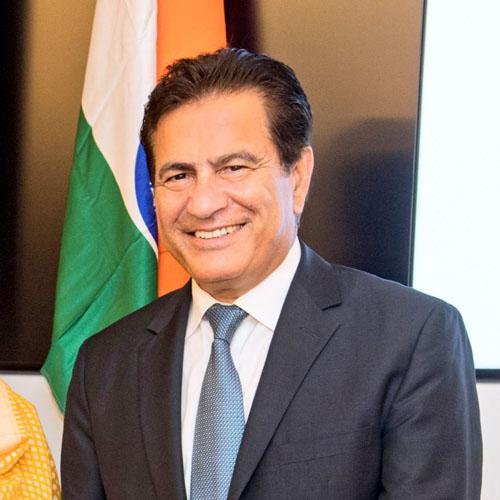
Aghi: US companies rely on market potentiality
Over the last 20 years, every US President – Bill Clinton, George W Bush, Obama and Trump – had differences with India on many issues, but if there was one common theme on which all of them agreed was this: a stronger relationship with India. What that means is that there has been a tradition of bipartisan support in favour of better ties with India, and every US President has tried to do his bit to bring the two nations closer. There is no reason to believe that Biden will not continue the tradition. Kugelman of Wilson Centre feels the US policy may see more consistency as Biden is a process-driven personality. But, of course, he will have his own style and nuances, and will put his personal stamp on the relationship. And he will have Vice-President Kamala Harris, the first Indian-American to be elected to the high office, and a host of other Indian Americans by his side. This may not be such a big plus. As Shiv Shankar Menon, national security advisor in the Manmohan Singh government, points out, “Kamala is of Indian origin, she will have to prove her objectivity, which is not a good thing for India.” – particularly so, if she has to make a run for the President’s job in 2014.
But most observers believe that Biden’s team will play it well. “The Biden team understands that lecturing India publicly or threatening it publicly will not go down well, and will not achieve any change that they want to see,” says Tanvi Madan, director, India Project, Brookings Institution. “I suspect you might have a Biden Administration that is more likely to bring these issues up privately (than the Trump Administration). But I think, publicly, you’ll see a continuation of what we saw both Obama and Trump did, which is alluding to these issues through talking about the importance for the world of India as a diverse, tolerant democracy.”
To sum up, the Biden win is a mixed bag for the Modi government, which had gone out of its way to appease Trump without commensurate results. It is up to New Delhi now to extract the maximum mileage out of the new situation.
